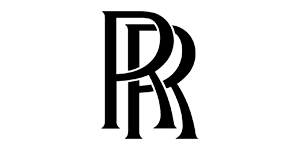Writing your assignments – tips and wrinkles

Most of us feel anxious and stressed about writing work for assessment – whether it is a short piece for a Level 2 Award, an extended essay for a Master’s level Diploma or professionals writing a report for clients or supervisors. This blog however is about writing assignments for ILM accredited qualifications through British School of Coaching.
So, what is the best approach to writing an assignment? I think about three components before starting to write:
- Read the question (assignment task, assessment criteria);
- Answer the question (fully address each assessment criterion);
- Check – have you fully answered the question (fully addressed each assessment criterion)?
Let me explain. The primary purpose of assessment is so that you, the learner, can demonstrate that you can perform to the standards set in order for qualifications or units can be awarded. We, assessors and internal verifiers are therefore looking to see that you have demonstrated your achievement of the learning outcomes for the programme. Assessment critieria are set out clearly with lots of detail about what is required in the assignment task. These are replicated in the marksheet which the assessors use to give marks for your work, and more detail is provided in the sufficiency descriptors.
So, before you start to ‘put pen to paper’ (or, fingers to keyboard, more probably!) read the whole of the assignment – from the task set out at the beginning up to and including the final assessment criterion. Overall, this defines the standards against which we will award marks. Assessment is about making a judgement as to the extent to which the required learning has been demonstrated. We can ONLY make this judgement against the assessment critieria – is the evidence provided in your assignment ‘suitable, sufficient and correct’. The sufficiency descriptors give you guidance about what you need to put into your assignment in order to achieve a ‘pass’ (50%) or a ‘good pass’ (75%). We as assessors and internal verifiers can only allocate marks against the assignment criteria, using the sufficiency descriptors as a guide.
Of particular importance in each assessment criterion is the verb – what is the standard asking you to do? For example, you may have written a brilliant description of ‘strategies other than coaching’ – but if the assignment asks you to ‘critically analyse’ these strategies, then simply describing them will not be sufficient. You need to describe it first (so that you demonstrate that you understand what you are going to analyse) and then ‘critically analyse’ it. ‘Critically analyse’ has two elements. ‘Analyse’ means to ask: what makes the strategies work the way they work? The ‘critically’ component of the assessment criterion asks, what makes this work the way it does and why? The addition of ‘and why’ requires an extra level to your work. This requires informed judgement and reference to theoretical models – in this case, it would be theoretical models of personal or organisational development. The verb is an indicator of the level or depth of information required to satisfy the criteria.
In this example, the criterion is asking for you to consider ‘alternative strategies. So, describing more than one is absolutely crucial. However well you ‘critically evaluate’ one alternative strategy this cannot achieve a pass mark. You are required to critically evaluate more than one strategy – two will be sufficient and it is not necessary to consider more than two alternatives.
Finally, consider how you structure your assignment. The easiest way (for you and us) it to use the sub-headings of the assignment task and the associated assignment criteria as sub-headings to for your work. This way, you can easily check that you have addressed all the assessment criteria and we can easily identify where you have addressed the criteria. We are duty bound to look for the relevant information when assessing an assignment and will try our utmost to find the information that is there. However, we cannot guarantee to spot a sentence about one thing buried in a paragraph or section about another thing and make the necessary inference that all the criteria have been satisfied. To check that you have fully addressed each criterion, read your assignment with the sufficiency descriptors to hand as well.
I’ve mentioned ‘level’ a couple of times in this blog – so next time I’ll be looking at the difference between Levels 3, 5 and 7 of the ILM accredited qualifications which British School of Coaching offer.
Did you find this blog helpful? For more on critical analysis see – What is meant by critical analysis?

Judith Barton, Director of Coaching & Mentoring






